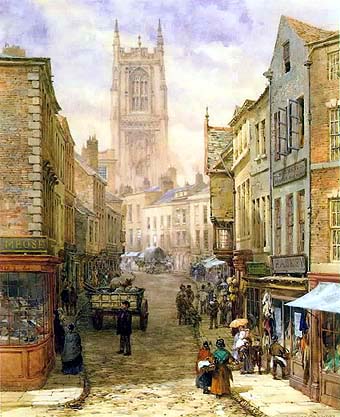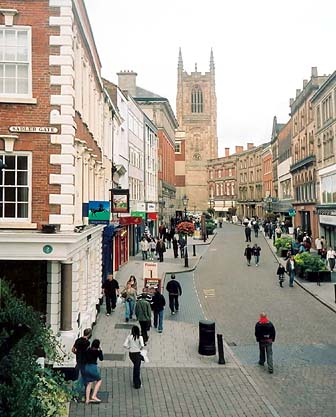



Irongate in 1865 and September 2005.
In the watercolour on the left, the first building we see is John Drewry's Derby Mercury, inhabited by a later occupant, William Bemrose (who went on to found a printing dynasty that still thrives in Derby today). Beyond that is the George Inn, a coaching inn from where coaches travelled on the new turnpike roads to London and Manchester every day. It was also a post office. The single storey building on the left is the birthplace of the celebrated 18th century painter, Joseph Wright of Derby. Next door but one, further along Irongate, is the Talbot Inn, where the Derby Society for Political Information held their meetings. Further along on the left was the Crompton Bank. Members of the Crompton family were active in the reform movement in the 1780's and Peter Crompton joined the Derby Society for Political Information. All the buildings on the right side of Irongate were later demolished and the street widened. The church was then the parish church of All Saints.
On the right is a picture taken in September 2005 from a similar viewpoint. It may seem the church (now a cathedral) has shrunk, but on closer inspection the building just jutting in front of the tower can also be seen in the watercolour, and is in about the same proportion to the tower in each. The painter must have been further away to achieve this perspective. The only buildings to have survived are the first two on the left, and the one in front of the tower. The old Derby Mercury building has been remodelled on the ground floor and windows have been added to the Sadlergate side. The whole building has been utterly changed internally and has been used as a bank since the early 20th century.
When I came to live in Derby in the 1970's the 14th century cathedral tower was completely black, covered in layers of soot from the industrial polution of the 19th and 20th centuries. It was cleaned, and now looks as it did before the Industrial Revolution.